I would like to add 2 different regression curves, coming from different models, in a scatter plot. Let's use the example below:
Weight=c(12.6,12.6,16.01,17.3,17.7,10.7,17,10.9,15,14,13.8,14.5,17.3,10.3,12.8,14.5,13.5,14.5,17,14.3,14.8,17.5,2.9,21.4,15.8,40.2,27.3,18.3,10.7,0.7,42.5,1.55,46.7,45.3,15.4,25.6,18.6,11.7,28,35,17,21,41,42,18,33,35,19,30,42,23,44,22)
Increment=c(0.55,0.53,16.53,55.47,80,0.08,41,0.1,6.7,2.2,1.73,3.53,64,0.05,0.71,3.88,1.37,3.8,40,3,26.3,29.7,10.7,35,27.5,60,43,31,21,7.85,63,9.01,67.8,65.8,27,40.1,31.2,22.3,35,21,74,75,12,19,4,20,65,46,9,68,74,57,57)
Id=c(rep("Aa",20),rep("Ga",18),rep("Za",15))
df=data.frame(Id,Weight,Increment)
The scatter plot looks like this:
plot_df <- ggplot(df, aes(x = Weight, y = Increment, color=Id)) + geom_point()
I tested a linear and an exponential regression model and could extract the results following loki's answer there:
linear_df <- df %>% group_by(Id) %>% do(model = glance(lm(Increment ~ Weight,data = .))) %>% unnest(model)
exp_df <- df %>% group_by(Id) %>% do(model = glance(lm(log(Increment) ~ Weight,data = .))) %>% unnest(model)
The linear model fits better for the Ga group, the exponential one for the Aa group, and nothing for the Za one:
> linear_df
# A tibble: 3 x 13
Id r.squared adj.r.squared sigma statistic p.value df logLik AIC BIC deviance df.residual nobs
<chr> <dbl> <dbl> <dbl> <dbl> <dbl> <dbl> <dbl> <dbl> <dbl> <dbl> <int> <int>
1 Aa 0.656 0.637 15.1 34.4 1.50e- 5 1 -81.6 169. 172. 4106. 18 20
2 Ga 1.00 1.00 0.243 104113. 6.10e-32 1 1.01 3.98 6.65 0.942 16 18
3 Za 0.0471 -0.0262 26.7 0.642 4.37e- 1 1 -69.5 145. 147. 9283. 13 15
> exp_df
# A tibble: 3 x 13
Id r.squared adj.r.squared sigma statistic p.value df logLik AIC BIC deviance df.residual nobs
<chr> <dbl> <dbl> <dbl> <dbl> <dbl> <dbl> <dbl> <dbl> <dbl> <dbl> <int> <int>
1 Aa 0.999 0.999 0.0624 24757. 1.05e-29 1 28.2 -50.3 -47.4 0.0700 18 20
2 Ga 0.892 0.885 0.219 132. 3.86e- 9 1 2.87 0.264 2.94 0.766 16 18
3 Za 0.00444 -0.0721 0.941 0.0580 8.14e- 1 1 -19.3 44.6 46.7 11.5 13 15
Now, how can I draw the linear regression line for the Aa group, the exponential regression curve for the Ga group, and no curve for the Za group? There is this, but it applies for different regressions built inside the same model type. How can I combine my different objects?



